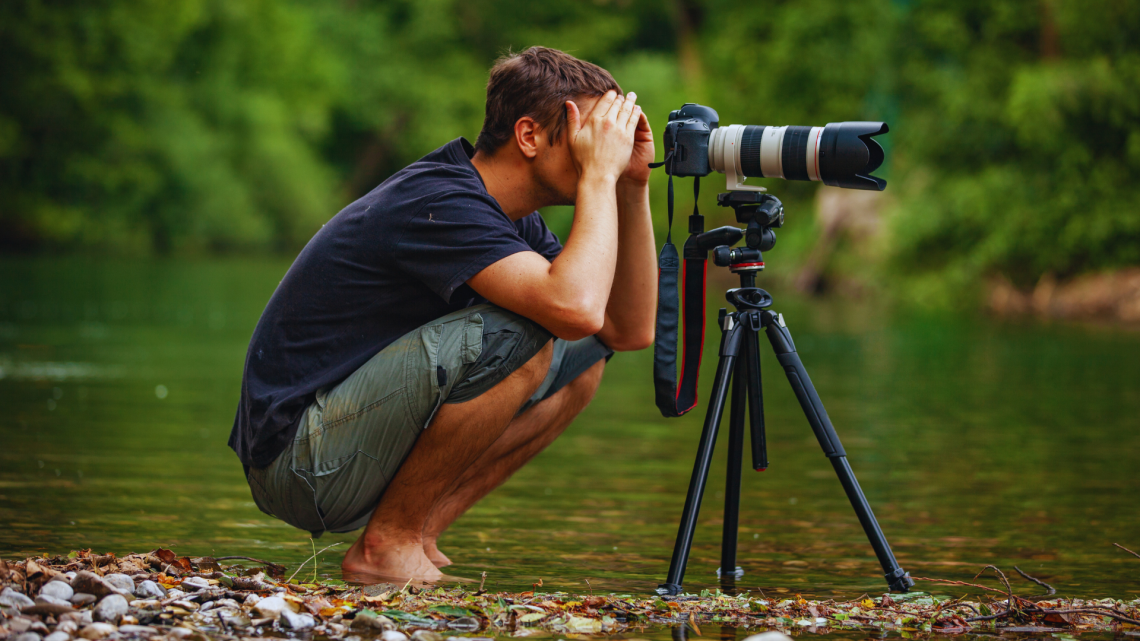
Photographing Wildlife: Essential Techniques for Capturing Nature’s Beauty
Photographing wildlife offers a unique chance to capture the beauty and diversity of nature. To effectively photograph wildlife, one must combine patience, knowledge of animal behavior, and technical skills. Understanding when and where to find animals, as well as how to respect their habitats, leads to more meaningful images.
Successful wildlife photography requires keen observation. Photographers must learn to anticipate animal movements and adapt to changing environments. A well-timed image can reveal the raw beauty of wildlife, evoking emotions and inspiring appreciation for the natural world.
In addition to technical skills, having the right equipment can make a significant difference. Selecting appropriate lenses and settings allows for capturing stunning detail, whether photographing a soaring eagle or a shy deer. With practice and dedication, anyone can improve their wildlife photography and tell compelling stories through their images.
Understanding Wildlife Photography
Wildlife photography encompasses a rich history, ethical considerations, and its practice as both an art form and a scientific endeavor. Understanding these aspects is essential for photographers aiming to capture the essence of wildlife while respecting nature.
History and Evolution
Wildlife photography emerged in the 19th century alongside advancements in camera technology. Early photographers faced challenges such as long exposure times and bulky equipment. Their efforts laid the groundwork for showcasing animals in their natural habitats.
As technology improved, so did the ability to capture wildlife behavior more vividly. The introduction of faster film and autofocus systems transformed the field. In the late 20th century, digital photography revolutionized wildlife photography, enabling instant previews and unlimited shots.
Today, wildlife photographers utilize digital tools and drones, allowing access to previously unreachable areas. This evolution continuously shapes how images inform viewers about wildlife and environmental issues.
Ethics and Conservation
Ethics play a crucial role in wildlife photography. Photographers must prioritize animal welfare, ensuring their actions do not disturb natural behaviors. Following guidelines, such as keeping a safe distance, is essential.
Responsible photographers advocate for conservation efforts through their work. They raise awareness about endangered species and habitats, often partnering with environmental organizations. Ethical practices promote respect for wildlife and contribute to their preservation.
Furthermore, awareness of legal regulations surrounding wildlife photography is crucial. Many regions have specific laws about photographing animals, particularly in protected areas. Photographers should stay informed to avoid negative impacts on wildlife.
Wildlife Photography as Art and Science
As both an art form and a scientific practice, wildlife photography serves multiple purposes. Artists capture the beauty of nature, allowing viewers to connect emotionally with wildlife. Composition, lighting, and timing are pivotal in creating stunning images.
From a scientific perspective, wildlife photography aids in research and education. It documents species behavior, migration patterns, and habitats. The resulting images become valuable resources for scientists and conservationists.
Additionally, wildlife photography contributes to public engagement with environmental issues. This connection can inspire action and support for conservation initiatives. By merging artistic vision with scientific inquiry, photographers play a critical role in advocating for wildlife.
Equipment and Gear
Selecting the appropriate equipment is essential for effective wildlife photography. This section covers the critical components, including cameras, lenses, accessories, and protection solutions.
Choosing the Right Camera
A wildlife photographer should prioritize a camera that offers fast autofocus and high frame rates. DSLRs and mirrorless options are both suitable, depending on personal preference.
Key Features to Consider:
- Sensor Size: Full-frame sensors provide better low-light performance.
- ISO Range: A wider ISO range helps capture images in various lighting conditions.
- Continuous Shooting Speed: A camera with at least 5 frames per second can help capture fast-moving animals.
In addition, weather-sealed bodies are advantageous for outdoor shooting. Ultimately, the right camera should complement the photographer’s style and needs.
Lenses for Wildlife Photography
Choosing the right lens is crucial for capturing wildlife effectively. Telephoto lenses, typically ranging from 200mm to 600mm, enable photographers to maintain distance while obtaining sharp images.
Recommended Lens Types:
- Prime Lenses: Known for exceptional image quality and faster apertures.
- Zoom Lenses: Provide flexibility by covering multiple focal lengths.
When selecting a lens, consider the following:
- Aperture Size: A larger aperture (e.g., f/2.8) allows more light, which is beneficial in low-light situations.
- Stabilization: Image stabilization features are important for handheld shots.
Supporting Accessories
Certain accessories can enhance wildlife photography outcomes significantly. A sturdy tripod or monopod offers stability, crucial for long exposures, especially with heavy lenses.
Essential Accessories:
- Camera Remote: Reduces camera shake during long exposures.
- Lens Filters: Circular polarizers or neutral density filters can manage reflections and control light.
Additionally, a good quality memory card ensures quick storage of high-resolution images. The right accessories can make a substantial difference in capturing the perfect shot.
Carrying and Protection Solutions
Proper carrying and protection solutions are vital for safeguarding equipment. A well-padded camera bag should accommodate the camera body, lenses, and accessories while allowing easy access.
Options for Carrying Gear:
- Backpacks: Offer comfort and distribute weight evenly.
- Shoulder Bags: Provide quick access but may become cumbersome over long periods.
Weather-resistant covers are beneficial for unpredictable conditions. Having the right carrying solutions allows photographers to focus on capturing their subjects without worrying about their gear.
Technical Skills Development
Developing technical skills is essential for successful wildlife photography. Key areas include understanding exposure, mastering focus techniques, applying effective composition in natural settings, and recognizing animal behavior to enhance shooting opportunities.
Exposure and Metering
Mastering exposure and metering is crucial. Photographers should understand the exposure triangle: aperture, shutter speed, and ISO.
- Aperture: Affects depth of field and light entry. Wider apertures allow more light and can beautifully blur backgrounds.
- Shutter Speed: Controls motion blur. Fast shutter speeds freeze action, ideal for capturing wildlife in motion.
- ISO: Adjusts camera sensitivity to light. Higher ISO settings work in low-light environments but can introduce noise.
Learning to use a light meter helps in evaluating available light for accurate exposure.
Focus Techniques
Focusing techniques can significantly impact wildlife photography. Autofocus systems often include different modes:
- Single-point AF: Useful for stationary subjects.
- Continuous AF (AI Servo): Ideal for moving animals, allowing the camera to track subjects automatically.
Additionally, using a lens with fast focusing and a wide aperture improves the chances of sharp images. Manual focus may also be beneficial in challenging lighting conditions or with subjects that blend into their environment.
Composition in the Wild
Effective composition enhances the visual appeal of wildlife photographs.
Key compositional elements include:
- Rule of Thirds: Dividing the frame into thirds can create balanced images. Placing the subject off-center draws the viewer’s eye.
- Leading Lines: Using natural lines in the environment guides the viewer’s gaze towards the subject.
- Framing: Incorporating natural elements like branches or leaves can frame the subject, adding depth.
Experimenting with different angles and perspectives can yield unique results. Low angles can elevate the subject against the background, making the photograph more engaging.
Understanding Animal Behavior
A deep understanding of animal behavior influences the success of wildlife photography. Observing animals in their natural habitat helps photographers anticipate actions and moments to capture.
- Habitat Awareness: Knowing the environment guides decisions on where to find specific wildlife at certain times.
- Behavior Patterns: Recognizing feeding, mating, or migration patterns informs the best times for shooting.
Quietly observing creatures without disturbance often leads to the most authentic images. Patience proves invaluable as it allows for the perfect shot when animals act naturally.
Field Techniques
In wildlife photography, effective field techniques significantly enhance the quality of images. Factors such as the approach to wildlife, understanding habitats, utilizing lighting, and choosing the right time of day are crucial for capturing compelling photographs.
Approaching Wildlife
Approaching wildlife requires patience and stealth. Photographers need to avoid sudden movements and maintain a low profile. Using natural cover like bushes or trees can aid in remaining inconspicuous.
Keeping a respectful distance is essential to avoid startling animals. Utilizing long lenses allows for closer shots without disturbing the subject. It’s also helpful to learn animal behavior, which can indicate how close one can safely get.
Using the right footwear is important, enabling quieter movements across different terrains. Being aware of wind direction can prevent the photographer’s scent from alerting wildlife.
Habitat and Environment Considerations
Understanding the habitat of the target species is vital for successful wildlife photography. Different environments such as forests, wetlands, or deserts create unique opportunities and challenges.
Photographers should research the specific locations where target wildlife can typically be found. Identifying signs like tracks, droppings, or feeding areas can indicate animal presence.
Time spent scouting can lead to a better understanding of the local ecology, which enhances the chances of capturing noteworthy photographs. Additionally, awareness of seasonal changes is important, as some species may migrate or change their behavior.
Lighting in Wildlife Photography
Mastering light helps elevate wildlife photography. Early morning and late afternoon are often the best times for capturing soft, golden light.
Photographers should pay attention to the direction of light. Backlighting can create dramatic effects, while side-lighting can enhance textures and details. When shooting in the harsh midday sun, finding shaded areas can help avoid harsh shadows.
Using reflectors or diffusers can also improve light quality. Adjusting camera settings like ISO and aperture can compensate for challenging lighting conditions, ensuring clear images.
Seasonal and Time-of-Day Strategies
Seasonal variations impact wildlife behavior, affecting photographic opportunities. Spring often boasts vibrant activity as animals engage in mating rituals.
In summer, dense foliage can conceal subjects, while autumn brings beautiful landscapes and migration opportunities. Winter can present unique conditions, as animals adapt to cold climates and their behaviors change.
The time of day also influences animal activity. Early mornings and late afternoons typically see higher wildlife movement. Understanding the specific habits of target species can enhance shooting success, as some may be nocturnal or diurnal. Adjustments to gear might be necessary for low-light conditions during certain times of the day.
Post-Processing
Post-processing is essential for enhancing wildlife photographs and achieving desired results. It involves various editing techniques and considerations that can elevate an image while maintaining its integrity.
Editing Best Practices
When editing wildlife photos, it’s important to follow a few best practices to ensure the final image is both appealing and realistic.
- Adjust Exposure: Carefully fine-tune the exposure to balance highlights and shadows without losing detail.
- Crop Thoughtfully: Crop to remove distractions and focus on the subject, but avoid excessive cropping which can degrade image quality.
- Enhance Colors: Utilize tools to enhance colors subtly. Avoid oversaturation, as this can misrepresent the subject’s natural appearance.
- Sharpen Selectively: Apply sharpening techniques to enhance detail in the subject, while minimizing noise in the background.
Maintaining a natural look is key to ethical editing.
Software Tools
Numerous software options are available for post-processing wildlife photographs.
- Adobe Lightroom: This tool provides comprehensive features for managing large batches of images and offers robust editing capabilities.
- Adobe Photoshop: Ideal for detailed editing, it allows for advanced manipulation, such as layer adjustments and retouching.
- Capture One: Known for its excellent color grading and tethering features, it is popular among professionals.
- GIMP: A free alternative to Photoshop, GIMP offers many powerful editing tools for budget-conscious photographers.
Choosing the right software depends on individual needs and skill levels.
Ethical Considerations in Editing
Ethical editing involves maintaining the authenticity of wildlife images.
- No Misrepresentation: It is crucial not to alter an image to the point that it misrepresents the subject’s natural behavior or environment.
- Transparency: Photographers should be open about how an image was edited when sharing.
- Respect for Wildlife: Maintaining the integrity of wildlife photography means avoiding edits that suggest a fabricated story or manipulate the scene excessively.
Following these ethical guidelines helps preserve the authenticity of wildlife photography.
Sharing and Publishing Your Work
Sharing and publishing wildlife photography involves creating an online presence, submitting work to magazines, and participating in contests. These avenues not only showcase talent but also open opportunities for professional growth.
Building an Online Presence
Establishing a strong online presence is essential for photographers. Social media platforms like Instagram, Facebook, and Pinterest allow for instant sharing and engagement with an audience. A dedicated website or blog provides a platform for showcasing portfolios, offering insights into wildlife photography, and selling prints or services.
Consistency in branding is crucial. Using a recognizable logo, cohesive color schemes, and a unified theme can attract followers. Engaging with the community through comments and collaborations can enhance visibility. Utilizing relevant hashtags increases the chances of images being discovered. Regularly updating content keeps the audience interested and informed.
Publishing in Magazines and Books
Getting published in magazines and books requires persistence and strategy. Photographers should start by researching publications that align with their style and subject matter. Reading submission guidelines thoroughly is vital to ensure compliance.
Developing a strong pitch is key. A photographer should include a brief description of their work, relevant experience, and how their images complement the publication’s theme. Quality images should always be prepared for submission, adhering to the specified formats. Networking with editors or attending industry events can provide additional opportunities to showcase work.
Photography Contests and Awards
Entering photography contests can significantly elevate a photographer’s profile. Many contests provide exposure through online galleries, social media, and publications. Winning or gaining recognition can enhance credibility and attract new opportunities.
Researching contests is important. Photographers should consider entry fees, submission deadlines, and themes. Tailoring submissions to fit specific contest criteria increases the chances of success. Maintaining a record of past entries and outcomes can help in refining future submissions. Often, contests also offer feedback, which is valuable for growth.
Conservation and Advocacy
Wildlife photography plays a crucial role in raising awareness about conservation issues. Through powerful images, photographers can inspire action and promote the protection of endangered species and habitats. Effective advocacy efforts can drive change and mobilize communities.
Photography as a Tool for Conservation
Wildlife photographers capture the beauty and vulnerability of nature, making a significant impact on conservation efforts. High-quality images can spark interest in the plight of certain species, leading to increased public support for conservation initiatives.
Photographs showcasing the natural habitat of animals can educate viewers about ecological balance. They emphasize the urgency to protect these areas from threats such as habitat loss and pollution. Additionally, social media platforms catalyze sharing of these images, reaching global audiences, and amplifying their message.
Engaging with Wildlife Organizations
Collaboration with wildlife organizations enhances the effectiveness of a photographer’s work. By partnering with nonprofits, photographers can participate in campaigns that promote conservation. These organizations often provide valuable resources, scientific data, and networking opportunities.
Photographers can contribute to various projects, such as raising funds through exhibitions or workshops. Many organizations also value personal narratives and insights, which can humanize issues and affect public perception. Engaging with these groups fosters a sense of community dedicated to wildlife protection.
Creating Impactful Narratives
Storytelling is vital in wildlife photography, as it establishes an emotional connection between the viewer and the subject. Photographers should focus on the stories behind their images, detailing the struggles and triumphs of wildlife conservation efforts.
Highlighting specific species or ecosystems can emphasize the significance of conservation work. By sharing these narratives through blogs, publications, or social media, photographers can motivate their audience to take action. The combination of striking imagery and compelling storytelling can lead to increased awareness and support for wildlife conservation.
Continuing Education and Resources
For photographers aiming to enhance their wildlife photography skills, various educational opportunities and resources can offer invaluable knowledge and experience. Engaging in workshops, utilizing books and online platforms, and joining relevant societies can significantly contribute to one’s development.
Workshops and Tours
Participating in workshops and guided tours provide hands-on experience in wildlife photography. These events typically combine instruction from experienced photographers with practical opportunities to capture wildlife in natural settings. Many workshops are designed to cater to different skill levels, from beginners to advanced photographers.
Professional instructors often cover topics like camera settings, composition, field techniques, and ethical considerations in wildlife photography. Tours may focus on specific locations, such as national parks or wildlife reserves, enhancing the likelihood of observing diverse species.
Photographers can benefit from the communal nature of these events, receiving feedback on their work and sharing tips with peers.
Books and Online Resources
A wealth of books and online resources exists to support wildlife photographers. Books on wildlife photography cover essential topics such as techniques for taking sharp images, understanding animal behavior, and post-processing skills. Titles by renowned photographers often feature personal anecdotes that enrich the learning experience.
Online platforms like websites, blogs, and video tutorials provide immediate access to current techniques and trends. Photographers can find valuable insights on online forums and social media groups where they can connect with others in the field.
Subscribing to photography magazines or online courses can also offer structured learning paths.
Joining Conservation and Photography Societies
Becoming a member of conservation and photography societies is beneficial for connecting with like-minded individuals. These organizations often provide networking opportunities, workshops, and educational resources tailored for wildlife photographers.
Conservation societies can emphasize the importance of ethical photography practices. They often host events that reinforce the need for sustainable interaction with wildlife.
Membership may come with exclusive access to photographic competitions, exhibitions, and publications, enhancing professional credentials. Regular attendance at society meetings can foster collaboration and inspire creativity within the community.





